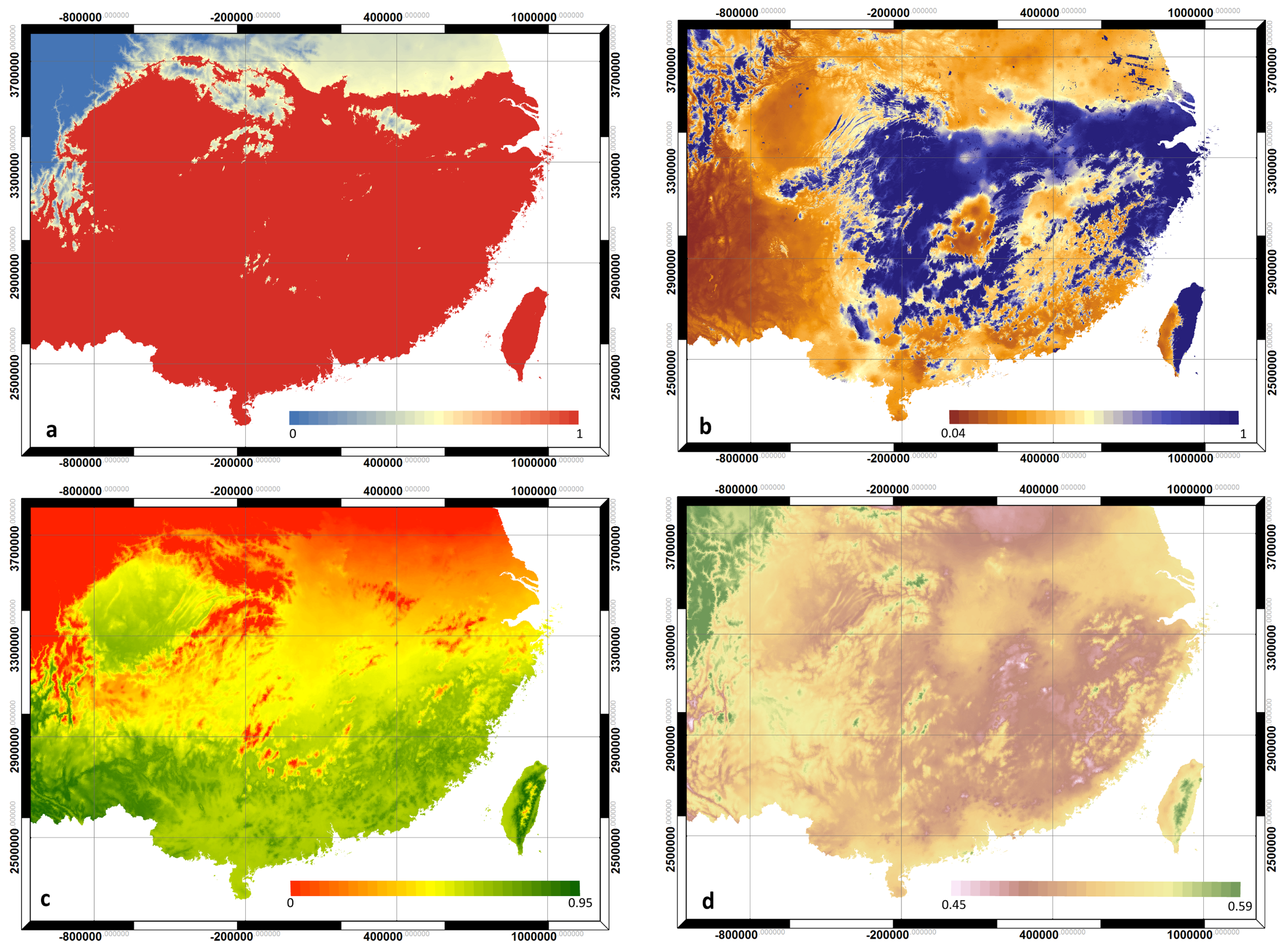Chinese fir and climate change
This project covered the entire Southern China.
Climate change is hot. Literally.
This was my thesis project at UBC [1] where I mapped the potential distribution and productivity of Chinese fir (Cunninghamia lanceolate) under two climate change scenarios. Chinese fir is probably one of the most ecologically and commercially critical coniferous species in south and southeast Asia.
Climate factors such as precipitation and temperature heavily impact the spatial distribution and growth of Chinese fir. Once those climate factors change beyond a species’ physiological tolerance, we can expect a shift in species distribution and productivity. The ability to understand and potentially predict such a shift has practical value for local and regional Chinese-fir-dominated ecosystems and plantations.
My goal was therefore to model the potential species distribution and its growth under 2 future climate projections – A1B and A2. The A1B represents a moderate projection assuming a fast growth in the global population and economy and a rapid adoption of new technologies in mitigating climate change. A2 is a severe projection assuming fast population and economic growth, while the adoption of new technologies in climate change mitigation is limited.
Ok. It’s going to get technical here. But I will keep it short:
I used a spatially enabled 3-PG model (Physiological Principles in Predicting Growth) develop by Waring and Coops [2].
3-PG model calculates gross primary productions (GPP) using utilizable, absorbed photosynthetically active radiation and canopy quantum efficiency. The calculation of respiration is not directly through 3-PG model; instead, the model uses the ratio of net to gross primary production (NPP/GPP).
One feature offered by 3-PG model that I really like is its ability to generate normalized monthly “climate modifiers”, which basically tells you which climate factors have the most impact on a species’ growth (Figure 1). There are 4 main climate factors used by 3-PG, namely, frost, soil water, temperature, and evaporative demand (VPD), each of which has a monthly score for a given climate scenario (i.e. A1B, and A2). The high that score is, the less impact it has on growth.
Figure 1.
Spatial variation of climatic modifiers produced by the 3-PG model. All modifiers were scaled between zero and one, where one represents the optimum condition for Chinese fir growth and zero indicates growth shutdown for at least one month; (a) Frost; (b) soil water; (c) temperature; (d) evaporative demand (VPD).
Our results indicated that fall VPD (Vapour-pressure deficit) has the most impact on Chinese fir’s distribution and growth capacity, followed by summer temperature. Soil water and frost have a minimal impact during the summer but negatively affect the growth throughout January and March. Overall, the species has a northward shift from its present distribution. Southern China will likely experience a slight boost in productivity while northern part of the predicted distribution (Figure 2).
Figure 2.
Chinese fir distribution under different climate projections; (a) current; (b) A1B projection; (c) A2 projection.
I also mapped where some potential high-productive site will be under two climate projections using average stand volume (m3/ha) at age of 20 years (Figure 3).
Figure 3.
Stand volume (m3/ha) at age of 20 years, predicted by 3-PG; (a) current climate; (b) A1B projection; (c) A2 projection.
1. Lu, Y., Coops, N. C., Wang, T., & Wang, G. (2015). A process-based approach to estimate Chinese fir (Cunninghamia lanceolata) distribution and productivity in southern China under climate change. Forests, 6(2), 360-379.
2. Landsberg, J.J.; Waring, R.H. A generalised model of forest productivity using simplified concepts of radiation-use efficiency, carbon balance and partitioning. For. Ecol. Manag. 1997, 95, 209–228.


